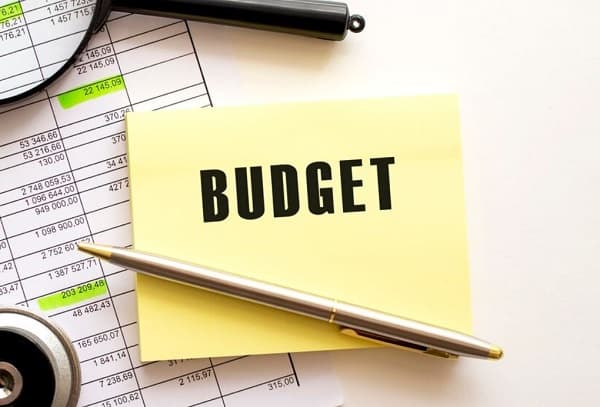Starting and sustaining a small business requires careful financial planning – especially if it’s your first time. Para kumita sa kahit anong klase ng negosyo, having a budget plan is necessary for success.
Let Ninja Van guide you through the importance of creating a budget plan and provide five practical steps to help micro business owners and aspiring entrepreneurs like you stay competitive in today’s competitive landscape.
What is a budget plan and why do you need one for a small business?
A budget plan outlines a business’ expenses vs revenue. Its primary purpose is to help business owners see if they have enough resources for their business to generate income and continue operating.
Imagine your small business as a ship navigating through the unpredictable waters of the market. A budget plan, given the analogy, essentially serves as your trusty compass.
It’s supposed to help you – as the business owner or captain of the ship – to steer your business toward the right direction and successfully reach its destination (your business goals).
An effective budget plan for a small business can:
- Help you spend wisely
- Keep an eye on debt, costs and expenses
- Leverage opportunities for growth and expansion
Without it serving as your compass, your business might feel like a ship lost at sea, tossed around and battered by external forces. And before you even notice it, it’ll be a sinking ship in a few months, incurring more losses vs generating profit.
Also read: Planning Your Business Strategy for the New Year
So, how do you create a business budget plan?
Now that we’ve emphasized the importance of having a budget plan, let’s dive into the practical steps to ensure your small business stays afloat and thrives in today’s competitive landscape.

1. Study average industry standards and create a spreadsheet
Before diving into the numbers, first take a look at the average industry standards for your business when it comes to expected costs and revenue. Understanding how your competitors operate can provide valuable insights.
Create a spreadsheet to organize this information and establish a baseline for your budget.
2. Review and plan for future expenses vs. current or estimated revenue
List all your business expenses, evaluate and categorize them. Consider not just current costs but also future ones. This list can include:
- Fixed costs (rent, payroll, taxes and debt repayments)
- Variable costs (utilities, billable labor, raw materials, cost of goods, transaction fees, commissions, etc)
If you’re an online seller, here’s a helpful guide on tax obligations for your ecommerce business in the Philippines.
In a separate column, review your current average monthly net income for the past year or estimated revenue (if your business is new), ensuring it aligns with your business goals.
Now, it’s time to craft your profit and loss statement:
- Sum up all your earnings and tally up all the expenses incurred throughout the month.
- Subtract the total expenses from your income.
Ideally, you want the resulting figure to be in the positive, indicating a profit, rather than in the negative, which would signify a loss.
This second step provides you with an idea of your business’ financial standing, helping you gauge the health and success of your business for the given period, and helps you set realistic financial expectations.

3. Factor in slack and strategize around cost-cutting and revenue generation
While planning your budget, factor in some slack to accommodate unexpected expenses. Budgeting for slack means that you’re allocating for expenditures outside the forecast by overestimating it or underestimating revenue projections.
And to help offset these variable expenses, you can also think strategically about cost-cutting – identify areas in your operations where you can save money without compromising quality.
This step, which aims to add another layer of safety or control over your finances, enables you to explore opportunities for additional revenue generation and ensures financial flexibility.
4. Schedule regular budget projections and business reviews
Periodic check-ins means that budget planning is not a one-time thing. Integrate monthly or weekly projections into your business calendar to discuss and anticipate changes in the market, adapt to new trends and refine your financial strategy.
Conduct thorough business reviews to assess the effectiveness of your budget plan and make necessary adjustments.
Here are 10 tips for better cash flow management.

sure you’re hitting your targets.
5. Make adjustments to your budget plan
As the business landscape evolves, so should your budget. Be open to making adjustments as needed.
Periodically evaluate your suppliers and services, as well, exploring options that provide better value for your money. This practice ensures that your budget plan stays dynamic and responsive to your business needs.
Give your small business financial stability
Budget planning serves as a financial roadmap for your small business, guiding you toward sustainable growth and success. Having a budget plan ready empowers you to make the right decisions based on your cash flow and profitability.

Additionally, it enables you to anticipate challenges, make informed financial decisions, and adapt to changing market conditions. You’re building financial stability and resilience in the face of uncertainties.
By following the basic steps we’ve outlined above, you’ll not only create an effective budget plan but also position your small business for sustainable growth. How you manage this plan is up to you!
More financial tips for your business:
Why Hire a Professional Tax Preparer?
Ways to Finance Your Small Business in PH
Take Note of These Tax Exemptions for MSMEs






